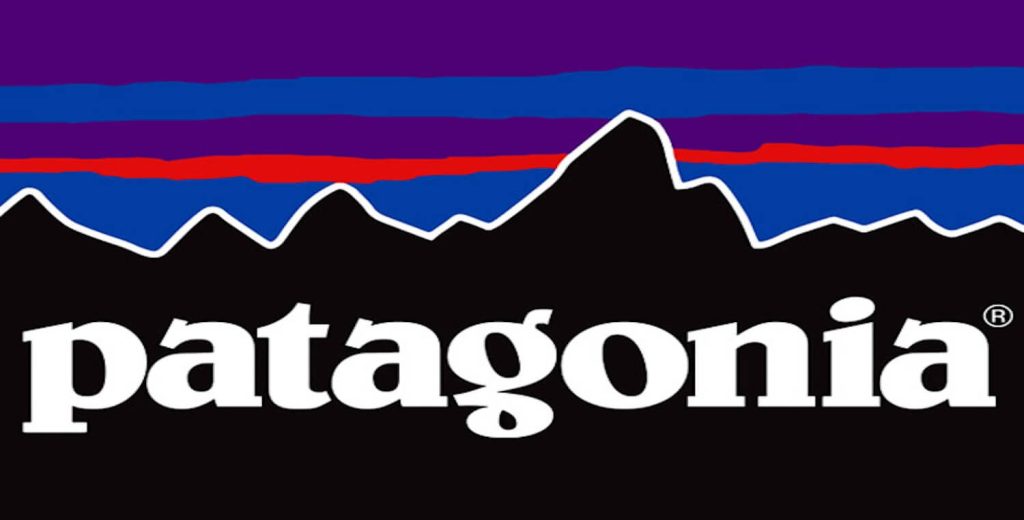How to Masterfully Balance Resources and Timing
Ah, marketing. The art and science of connecting products to people, dreams to reality, and—if you’re not careful—budgets to bankruptcy. As exhilarating as it is to brainstorm grandiose campaigns with unlimited budgets, endless time, and a small army of marketing geniuses, reality usually knocks on the door with a stark reminder: you don’t have unlimited anything. So, what’s a marketer to do?
Welcome to the Marketing Manifesto, where we champion the beauty of constraints and the brilliance of working within them. Discover how you can craft realistic marketing strategies that respect your resources and time.
1. The Myth of the Unlimited Budget

The Illusion of Infinite Funds
Picture this: you’re sitting in a meeting, and someone (probably the CEO after watching a particularly inspiring TED Talk) suggests a marketing campaign so ambitious that it makes “Coca-Cola’s Share a Coke” look like a lemonade stand project. The ideas start flowing: international TV spots, a viral TikTok challenge, a partnership with the hottest celebrity of the moment. All eyes turn to you, the marketing maestro, to make it happen. There’s just one tiny problem—your budget is more lemonade stand than global conglomerate.
Embrace the Power of Constraints
Contrary to popular belief, constraints can be a marketer’s best friend. A limited budget forces you to prioritise, innovate, and make smarter decisions. It’s not about cutting corners; it’s about finding the sharpest, most effective corner to cut. Think of it as a creative challenge—one that can lead to ingenious solutions and a more profound understanding of your market.
Creative Cost-Cutting Strategies
- Leverage Social Media: Social media platforms are the playground of the frugal marketer. With a well-crafted strategy, you can reach thousands without breaking the bank. Focus on creating engaging content, building a loyal following, and utilising targeted ads that offer excellent ROI.
- Content Marketing: High-quality content is king. Invest in creating valuable, shareable content that resonates with your audience. Blog posts, infographics, and videos can drive organic traffic and establish your brand as an authority in your industry.
- Influencer Partnerships: Instead of splurging on A-list celebrities, partner with micro-influencers who have a dedicated following. They often offer higher engagement rates and can be more authentic ambassadors for your brand.
2. The Time Trap

The Seduction of Unlimited Time
In a perfect world, every marketing campaign would have ample time for planning, execution, and a leisurely lunch break. Unfortunately, the real world operates on deadlines, and those deadlines often come sooner than you’d like. The allure of unlimited time is a siren song that can lead to procrastination, rushed work, and missed opportunities.
Mastering the Art of Time Management in Marketing
Effective time management is the cornerstone of successful marketing. It’s about making every minute count and ensuring that your strategies are not just well-planned but also well-executed. Here are some strategies to keep you on track:
- Set Clear Priorities: Not all tasks are created equal. Use the Eisenhower Matrix to categorise tasks based on urgency and importance. Focus on what will have the most significant impact first.
- Create a Timeline: Develop a detailed project timeline with specific milestones and deadlines. This will help you stay organised and ensure that everyone on your team knows what’s expected and when.
- Delegate Wisely: You can’t do everything yourself. Delegate tasks to team members based on their strengths and expertise. This not only lightens your load but also empowers your team and improves overall efficiency.
Case Study: The Cinderella Campaign
Once upon a time, in a land not so far away, a small startup had a big idea but a tiny timeframe. They needed to launch a new product in just six weeks. Instead of panicking, they embraced the challenge. They created a concise plan, prioritised critical tasks, and used agile marketing techniques to adapt quickly to feedback. The result? A successful launch that exceeded sales targets and established them as a formidable player in their industry. The moral of the story? Time constraints can drive innovation and excellence.
3. The Human Element

The Mirage of Unlimited Talent
Imagine having a marketing team so large and talented that it makes Google’s look like a high school project group. The reality for most companies, however, is quite different. Human resources are finite, and the talent pool is often stretched thin. But fear not! With the right approach, you can maximise the potential of your existing team and achieve remarkable results.
Building a Dream Team with Realistic Expectations
- Assess Your Team’s Strengths: Conduct a skills inventory to understand the strengths and weaknesses of your team members. This will help you allocate tasks more effectively and identify areas for development.
- Invest in Training: Continuous learning is crucial. Provide opportunities for your team to upskill through workshops, online courses, and industry conferences. This not only improves their capabilities but also boosts morale.
- Foster a Collaborative Culture: Encourage collaboration and open communication within your team. A collaborative environment fosters creativity and ensures that everyone is working towards common goals.
Outsourcing and Freelancers: The Hidden Gems
Sometimes, your team may not have the bandwidth or expertise to handle specific tasks. This is where outsourcing and freelancers come in. Freelancers can offer specialised skills on a project-by-project basis, providing flexibility and expertise without the long-term commitment. Just remember to vet them thoroughly and integrate them seamlessly into your workflow.
4. Technological Tango

The Fantasy of Infinite Tech Resources
In an ideal world, every marketing team would have access to the latest, most advanced technology – AI-driven tools, VR experiences, and automation tools that practically run themselves. But in reality, technology comes with a price tag, and not every company can afford the latest bells and whistles.
Choosing the Right Tools for Effective Marketing Plans
- Evaluate Your Needs: Before investing in any technology, assess your specific needs. What problems are you trying to solve? What are your goals? Choose tools that align with your objectives and offer the best value for money.
- Maximise Existing Tools: Often, companies underutilise the tools they already have. Ensure you’re getting the most out of your current technology before investing in new ones. Regular training and updates can help you leverage these tools more effectively.
- Prioritise Integration: Choose tools that integrate well with your existing systems. Seamless integration can save time, reduce errors, and improve overall efficiency.
The Power of Data Analytics in Cost-Effective Marketing
Data is the new oil, and analytics tools can help you extract valuable insights to inform your marketing strategies. Invest in analytics tools that provide actionable insights and enable you to measure the effectiveness of your campaigns. This data-driven approach ensures that your resources are being used efficiently and effectively.
5. Timing is Everything

The Illusion of Perfect Timing
We’ve all been there—waiting for the perfect moment to launch a campaign, only to find that moment never comes. The truth is, there’s rarely a perfect time to do anything. Market conditions change, competitors make unexpected moves, and internal dynamics shift. The key is to balance timing with readiness.
Market Timing: Reading the Signals
- Stay Informed: Keep a close eye on industry trends, competitor activities, and market conditions. This will help you identify opportunities and avoid potential pitfalls.
- Be Agile: Flexibility is crucial. Develop strategies that can be adjusted quickly in response to changing circumstances. Agile marketing techniques, such as sprints and iterative testing, can help you stay nimble.
- Test and Learn: Use A/B testing to experiment with different approaches and determine what works best. This iterative process allows you to refine your strategies and optimise performance.
Project Timelines: Realism Over Idealism
Creating realistic timelines is essential for successful marketing. Overly ambitious deadlines can lead to stress, mistakes, and burnout. Instead, set achievable milestones and build in buffer time for unexpected challenges. This approach ensures that your campaigns are executed flawlessly and delivered on time.
The Adaptability Advantage
In a world where change is the only constant, adaptability is a superpower. Develop a culture of flexibility within your team, encouraging them to embrace change and view it as an opportunity rather than a threat. This mindset will enable you to pivot quickly and stay ahead of the competition.
6. Crafting Sustainable Success
The Reality of Sustainable Marketing
Sustainable growth isn’t about making a big splash and then fading into obscurity. It’s about creating a steady, reliable path to success. This requires a balanced approach that considers not just immediate gains but long-term stability.
Building a Solid Foundation for Marketing Success
- Consistency is Key: Consistent messaging and branding help build trust and loyalty among your audience. Ensure that your marketing efforts are aligned and reinforce your brand values.
- Customer-Centric Approach: Focus on understanding and meeting the needs of your customers. This customer-centric approach fosters loyalty and drives repeat business.
- Measure and Optimise: Regularly measure the effectiveness of your marketing efforts and use the data to optimise your strategies. This continuous improvement process ensures that you’re always moving in the right direction.
The Role of Innovation in Marketing
While working within constraints, don’t be afraid to innovate. Innovation doesn’t always require massive budgets; sometimes, the most impactful ideas are the simplest. Encourage a culture of creativity within your team and be open to new approaches and ideas.
Case Study: The Sustainable Star

Let’s look at a company that got it right: Patagonia. Known for its commitment to sustainability, Patagonia has built a brand that stands for more than just outdoor gear. Their marketing efforts reflect their values, and they consistently engage their audience with meaningful, authentic content. They’ve shown that you don’t need a massive budget to make a significant impact—just a clear vision, a dedicated team, and a commitment to doing things right.
Conclusion: The Realistic Marketing Manifesto

In the grand theatre of marketing, it’s easy to get swept up in the allure of limitless possibilities. But true success comes from mastering the art of the possible. By embracing constraints and leveraging them to drive creativity and innovation, you can craft marketing strategies that are not only effective but also sustainable.
Remember, it’s not about having unlimited resources—it’s about making the most of the resources you have. It’s not about waiting for the perfect moment—it’s about making the most of the moments you’re given. And it’s not about doing everything—it’s about doing the right things, the right way.
So, fellow marketers, let’s raise a glass (of reasonably priced, office-friendly bubbly) to the power of realistic marketing. Here’s to working within our means and exceeding expectations. Here’s to turning constraints into catalysts for brilliance. And here’s to creating marketing magic that’s not just aspirational, but achievable. Cheers!
And remember – plan your work, work your plan!
FAQ
What is a realistic budget for marketing?
Economists may disagree on the precise percentage, but typically, most small businesses allocate between 5% and 12% of their total revenue to marketing. In this context, total revenue refers to all the money generated from sales before deducting expenses.
What is an example of a marketing budget?
Typically, the budget is based on past, current, or projected sales figures. For instance, if decision-makers decide to allocate 20% of this year’s sales to next year’s marketing budget and the company earns $1 million in sales revenue, the marketing budget would be $200,000.
Does a marketing budget include salary?
Depending on the company, marketing budgets may include the salaries of staff members on the marketing team.
What is a good marketing budget for a small startup?
Typically, startups should allocate about 11% of their revenue to marketing. To find your gross revenue, calculate your total sales or earnings. If you don’t have an estimate yet, use your projected earnings as a benchmark for setting your marketing budget.
How to forecast A marketing budget?
A straightforward and widely used method to forecast your marketing budget is to rely on historical data. By examining past performance metrics like revenue, sales, conversions, leads, costs, and ROI, you can establish a baseline for future projections.

